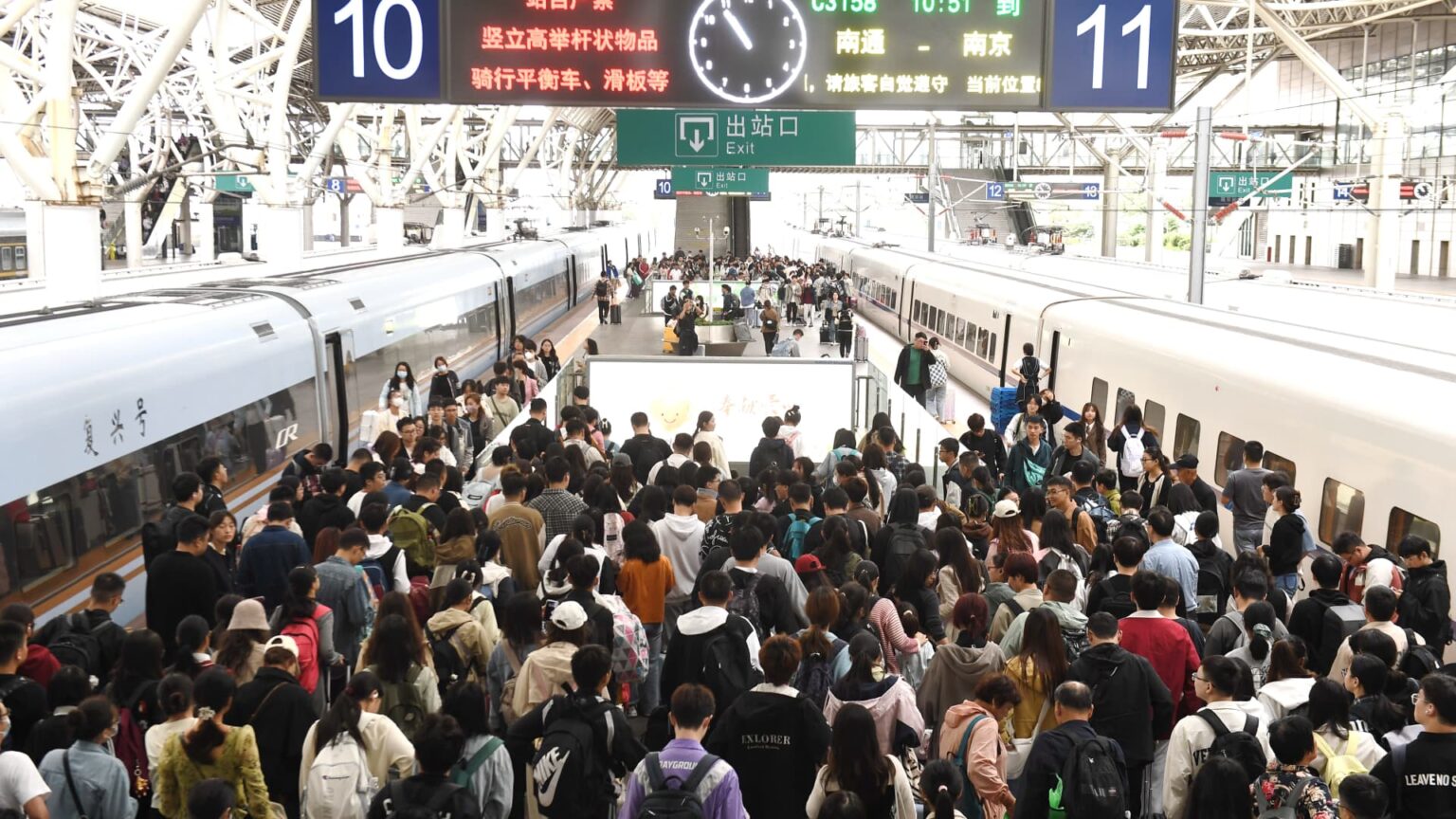BEIJING — China’s big “Golden Week” holiday saw domestic tourism rebound to around pre-pandemic levels, while overseas travel had yet to fully recover, according to official figures.
Those numbers for the eight-day holiday that ended Friday also came in lower than the government had initially predicted.
Golden Week domestic tourism revenue was 753.43 billion yuan ($103.24 billion) — a 1.5% increase from that in 2019, according to China’s Ministry of Culture and Tourism. The number of domestic tourist trips rose by 4.1% from 2019 to 826 million during the latest eight-day holiday, the ministry said.
Both figures were lower than what Chinese state media had earlier cited the ministry as predicting: 896 million trips and 782.5 billion yuan in domestic tourism revenue.
However, the final tourism revenue figure still marked a rebound to 2019 levels for the first time since China ended its Covid-19 restrictions late last year, Morgan Stanley’s Chief China Economist Robin Xing and a team pointed out in a note Friday.
They added that on a per capita basis, spending returned to 98% of 2019 levels, much higher than the 85% figure seen during holidays earlier in the year.
“This is likely due to an extra-long Golden Week holiday (eight days vs. seven usually), which encouraged long-distance travel and thus boosted average spending,” the Morgan Stanley analysts said.
This year, the traditional Chinese Mid-Autumn Festival and the Oct. 1 National Holiday were close enough that Beijing declared an eight-day holiday from Friday, Sept. 29 to Friday, Oct. 6, the official dates of this year’s Golden Week.
That meant the subsequent Saturday and Sunday were officially working days, but some businesses did not resume work until Monday.
In a country where businesses typically only provide a handful of paid vacation days, the week-plus break also meant more people chose to travel overseas.
The National Immigration Administration recorded about 11.8 million trips in and out of mainland China during the holiday, for a daily average of nearly 1.5 million trips — that’s 85.1% of 2019 levels.
That was also below earlier predictions, reported by state media, which forecast nearly 1.6 million trips across the border a day.
Chinese travel booking site Trip.com Group said outbound travel during the holiday surged by more than eight times versus a year ago, with people in their mid-20s to early 30s accounting for nearly 30% of such travelers.
Top destinations included Thailand, Singapore, Malaysia and South Korea, Trip.com said. It noted that Switzerland, Spain, Turkey, the U.K. and France saw the fastest growth in tourist numbers versus China’s Labor Day holiday in May.
Trip.com did not provide comparisons to 2019. CEO Jane Sun previously told CNBC’s Eunice Yoon that long wait times for visa applications — such as two to six months to visit Europe — are keeping people in China from traveling internationally as much as they’d like to.
The uptick in Chinese tourism comes as the country’s rebound from the pandemic has slowed, dragged down in part by a property market slump.
“The National Day golden week tourism data, together with the still above-50 September services [purchasing managers indexes], suggest the services recovery has decelerated but continues,” Goldman Sachs analysts wrote in a note Sunday.
“We believe additional policy easing will be necessary for further recovery in consumption and services, especially given the continued property downturn and still-dampened confidence,” the report said.
The analysts maintained their China GDP forecast of 5.4% for the year.
Read the full article here










